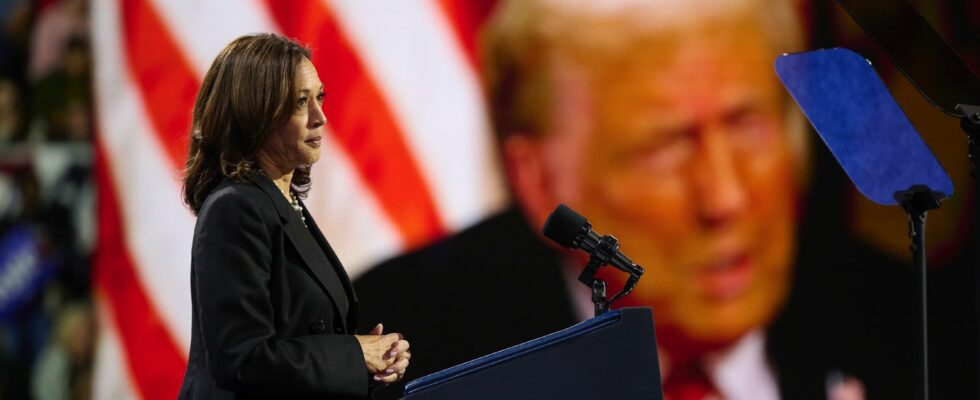There are now only three weeks left for the two presidential candidates to convince Americans to vote for them on November 5. Few certainties are emerging at the moment while Democratic candidate Kamala Harris, like former Republican President Donald Trump, is struggling to widen the gap in the polls. According to the poll average held by The New York TimesKamala Harris is credited with 50% of voting intentions compared to 47% for her Republican rival. In the latest weekly survey from the consulting firm Morning Consultpublished this Tuesday, October 15, Harris leads by four points, one point less than in his two previous studies.
Not all polls are as optimistic about the vice president’s chances of winning. The channel’s latest opinion study NBC Newspublished on Sunday, places the two contenders for the White House at 48% voting intentions. Compared to the channel’s previous poll, Donald Trump gains four points while Kamala Harris falls by one point.
What is happening in the swing states ? These key states that could tilt the outcome of the election. Most polls show Harris leading in Michigan, Pennsylvania, Wisconsin and Nevada, while Donald Trump has an advantage in Arizona, North Carolina and Georgia, according to the polling average of FiveThirtyEight. A trend also observed by the daily The New York Times.
Chasing the Voices of Black and Latino Voters
In the final stretch, it appears that Kamala Harris is focusing on the votes of the black and Latino electorate. A New York Times/Siena College poll published Sunday gives him less than 60% of voting intentions in the Hispanic community, which would represent the lowest level for a Democratic candidate in 20 years. In addition, Kamala Harris is credited with only 19 points ahead of her Republican opponent within this strategic electorate in several pivotal states, notably in the South-West, such as Arizona or Nevada, or seven less than Joe Biden in 2020 and 20 fewer than Hillary Clinton in 2016.
Barack Obama, the first black president of the United States, very mobilized for Kamala Harris before this election which promises to be close, did not mince his words last week in the key state of Pennsylvania, in the face of polls which have since shown weeks that some African Americans are more tempted by the Republican tribune than in 2020. “That poses a problem to me. It makes me think that you don’t like the idea of having a woman as president,” said bluntly Barack Obama, to the address of his “brothers” who hesitate to rally the vice-president and Democratic candidate.
Harris targets men, Trump conquers women
Both candidates are also very attentive to the gender of their voters. According to a recent survey New York Times/Siena, Donald Trump had an 11-point lead over Kamala Harris among men, while the Democrat preceded him by 15 points among women. Kamala Harris, who absolutely does not insist on the fact that she could become the first woman president of the United States, as Hillary Clinton did in 2016, herself seeks to reach more of the male electorate. This week, she is scheduled to appear on a show hosted by Charlamagne Tha God, a radio host and comedian who is very popular, particularly among young African-American adults. She also recently gave an interview to Howard Stern, another radio host known in the past for his salacious provocations, and who sang the praises of the vice-president.
Conversely, Donald Trump is pursuing the vote for women. The Republican benefited in 2016 and 2020 from robust support from white women, sensitive to his muscular message on the economy and security. He now presents himself as their “protector”.
The fact remains that these opinion surveys must be analyzed with caution because the American election is not decided by direct universal suffrage as in France. To win, the candidate must above all obtain the majority of the 538 electors, distributed in each of the 50 states, with more or fewer seats depending on their demographics. The latter are elected according to the “winner-takes-all” rule. In other words, the leading candidate in a state wins all the major voters involved in it. Certain States, more populated than others, therefore count more. In 2016, we must remember that Hillary Clinton lost to Donald Trump after having collected some three million more ballots than him, without obtaining a majority vote from the electors.
